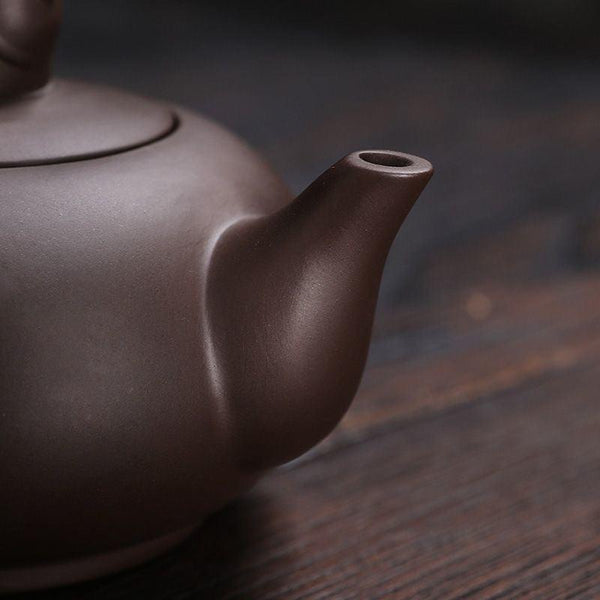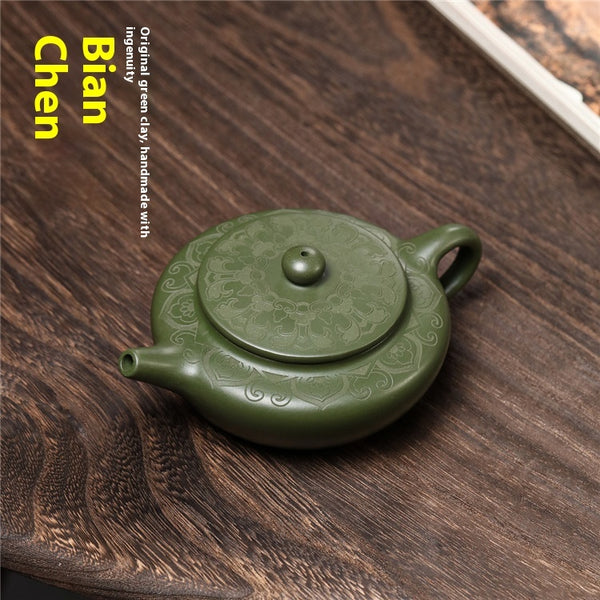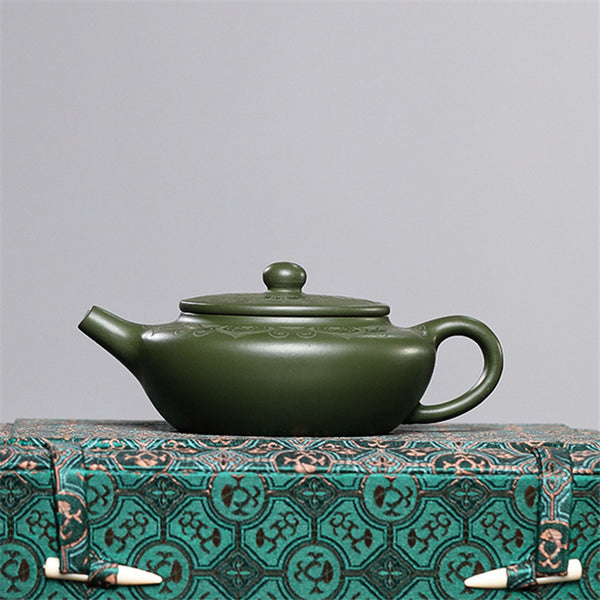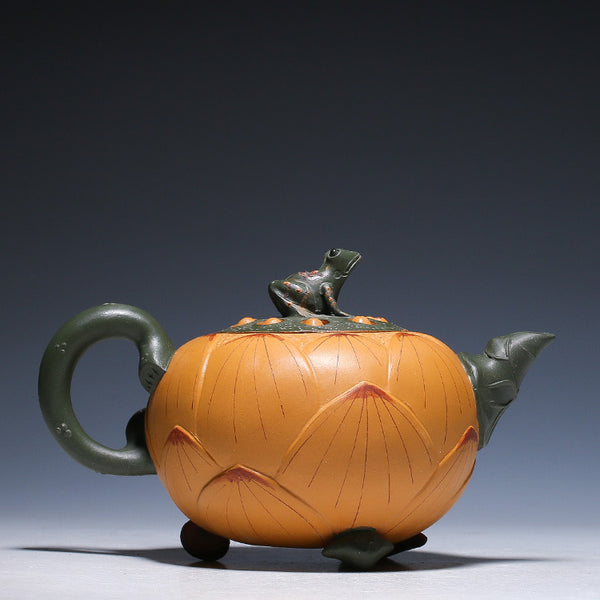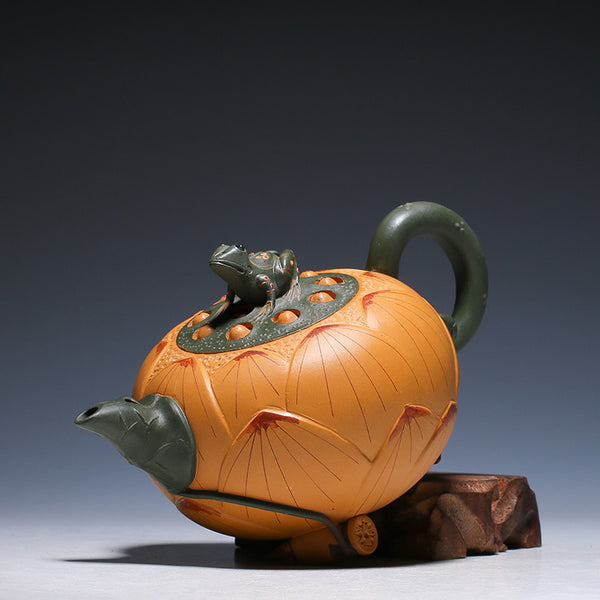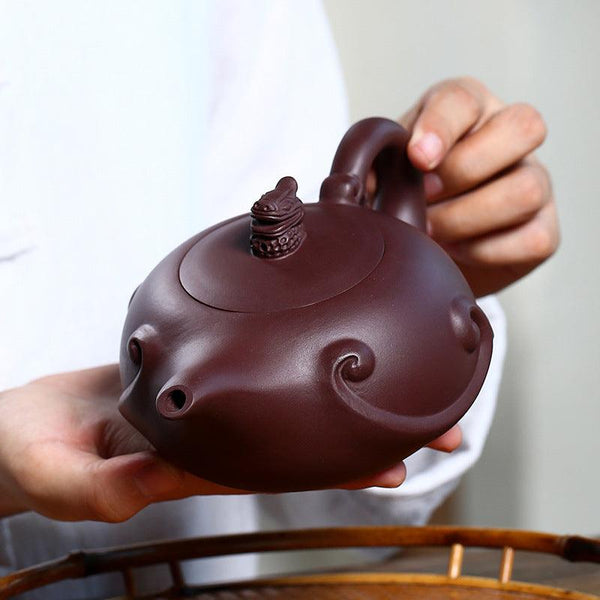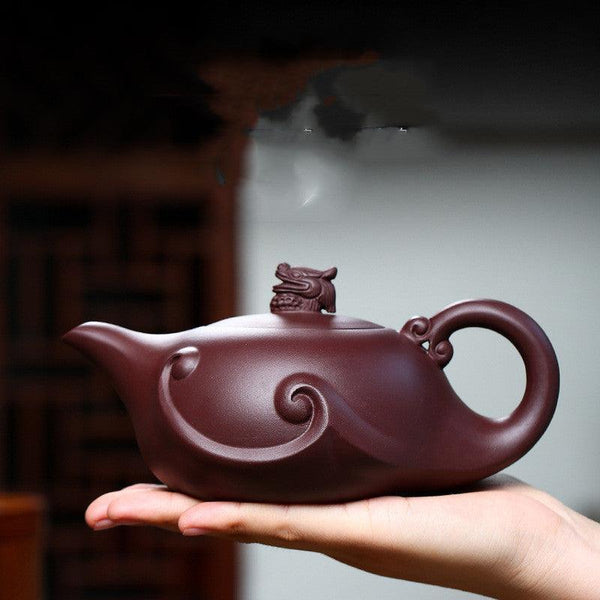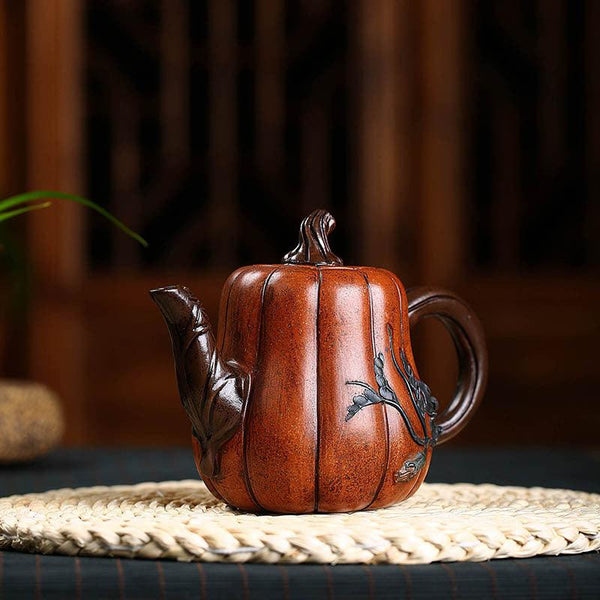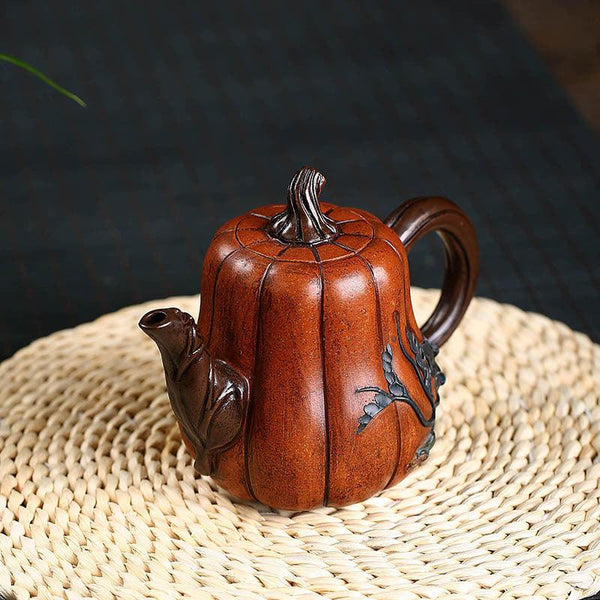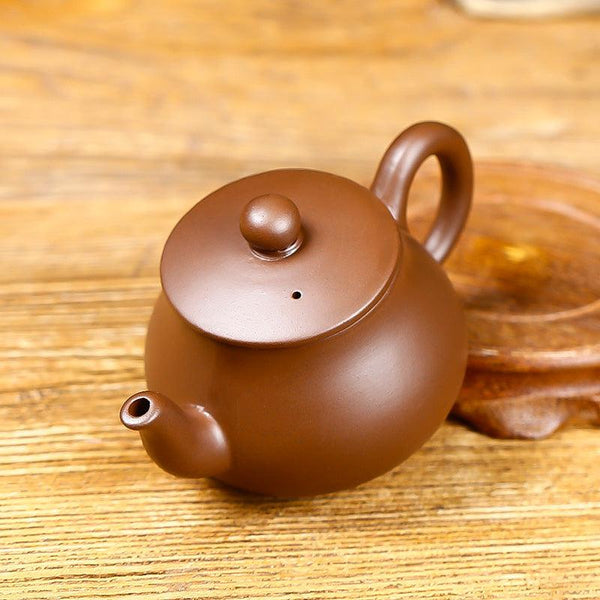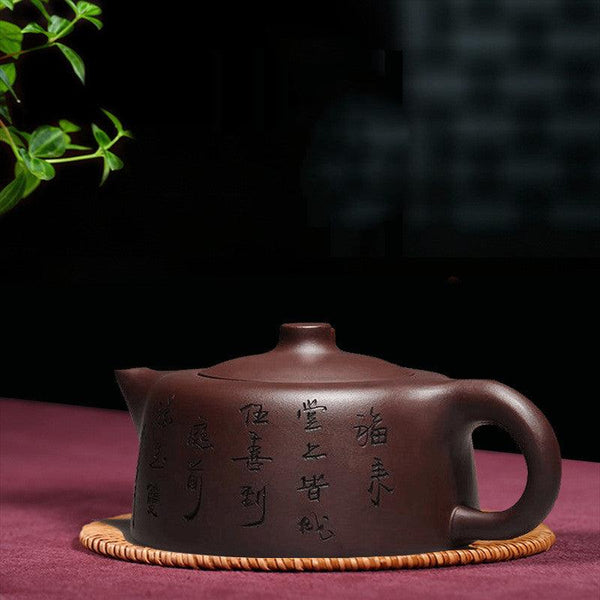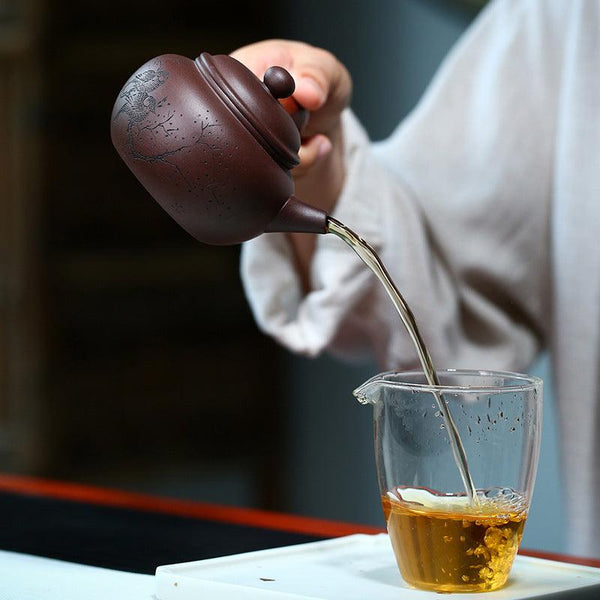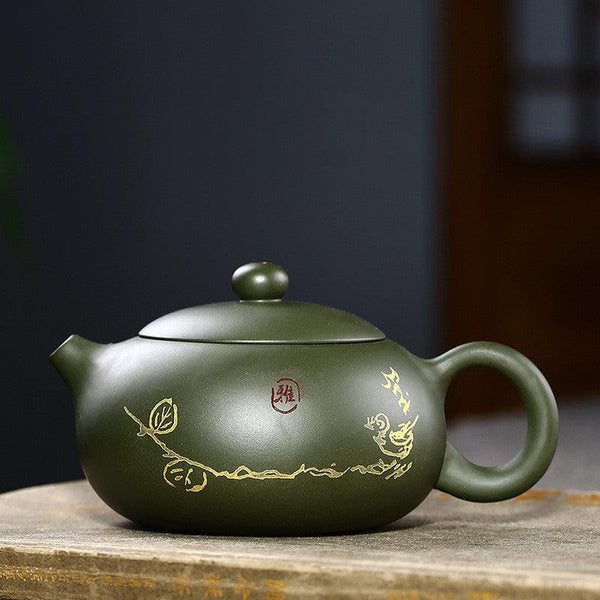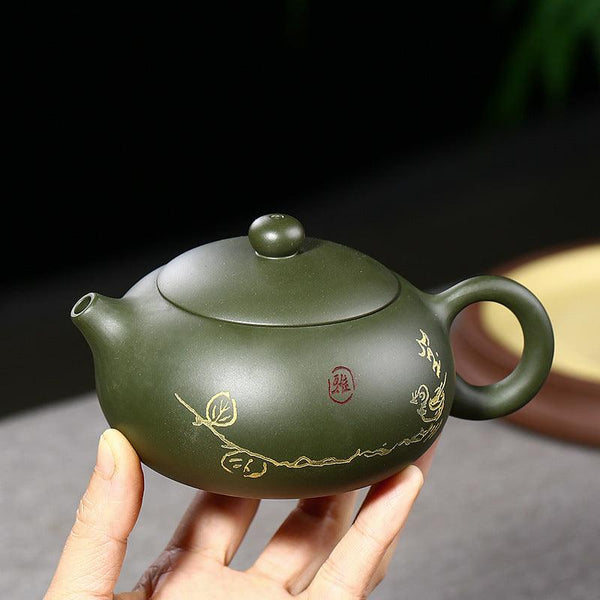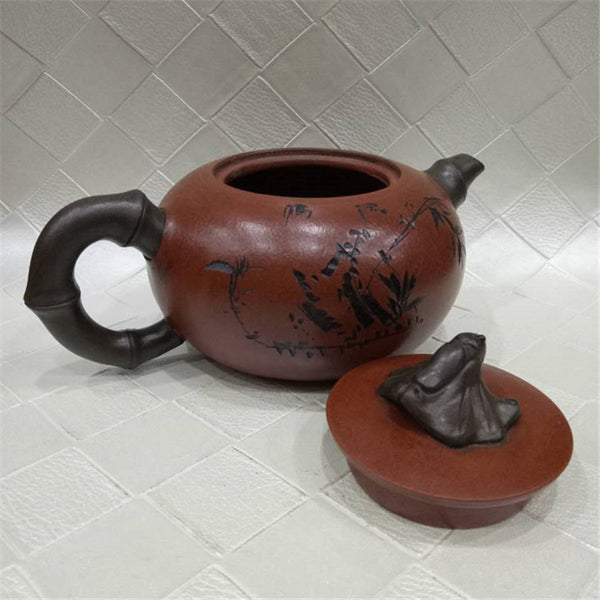By scientifically matching the shape of the teapot and the clay material, the Zisha teapot can not only enhance the taste of the tea but also become an artistic carrier at the tea table.
Cores of Matching Zisha Teapots with Tea
Soil Pores
Zisha teapots can be made of different types of clay, including purple clay, red clay, green clay, symbiotic mineral clay, and other blended clay. The respiration of different clays will affect the oxidation of tea leaves and the release of aroma.
Pot Shape
The height, opening size, and thickness of the teapot affect the heat preservation and tea aroma concentration. The degree of roasting determines both the type of tea and its optimal brewing temperature. Therefore, when choosing a purple clay teapot, you should understand the impact of different pot shapes on tea aroma concentration.
Tea Adaptability
Choose the pot shape and clay according to the degree of tea fermentation, brewing water temperature, and brewing tolerance.
Types of Zisha Teapot Clay
The clay of a Zisha teapot is the core element that determines its quality, color, and function. Yixing purple clay (five-color soil) is weathered and refined to form different types of clays, each of which has unique physical properties and aesthetic effects.
Purple clay
The color of the clay is mainly purple-brown, with obvious granularity, good air permeability and strong adsorption. The high-quality ore layer in purple clay has fine clay and contains "chicken eye" particles. After firing, it is warm and simple.
Green clay
The original ore is light green, beige or light yellow after firing, with fine texture and medium air permeability. It has a high shrinkage rate (about 10-12%), is easy to crack, and is difficult to form. It is mostly used for decoration or blending.
Red clay
The original ore is orange-red, and the color is vermilion or brown-red after firing. The clay is fine, high in density, and has a strong fragrance.
Blue-grey clay
The symbiotic ore of purple clay and green clay has a high iron content. After firing, it is blue-grey, simple and steady.
Sesame Duan clay
The symbiotic ore of Duan clay and purple clay has a dense surface of black particles (purple clay particles), which looks like sesame and has good air permeability.
Choose The Right Zisha Teapot for Your Tea
Green tea
Green tea is an unfermented tea, avoids high-temperature brewing, and is easy to oxidize.
Suitable pot type
Flat belly wide mouth pot (such as antique pot, well fence pot): the pot body is short, the heat dissipation is fast, and the tender buds are not suffocated.
Thin body pot: thin body wall, fast heat conduction, shorten the brewing time.
Recommended clay
Duan clay (light color): good air permeability, weak adsorption, not easy to cover the elegant aroma of green tea.
Oolong tea
Oolong tea is a semi-fermented tea that requires high-temperature brewing to stimulate the tea flavor.
Suitable pot type
Tall body and small mouth pot (such as pear-shaped pot, or Siting pot): The pot is tall and has strong aroma-gathering properties, suitable for high-aroma oolong.
Round pot with thick walls (such as Duoqiu pot, Rongtian pot): The pot wall is thick and has good heat preservation, suitable for heavy-roasted rock tea.
Recommended clay
Red Clay: high density, moderate air permeability, excellent aroma-locking effect, especially suitable for Tieguanyin and Phoenix Dancong.
Purple Clay: strong heat preservation, suitable for Wuyi rock tea, Dahongpao and other teas that require high-temperature stewing.
Black tea
Black tea is a fully fermented tea, sweet and mellow, and needs to be steeped moderately to release the substances contained in it.
Suitable pot type
Medium-sized round-bellied pot (such as Xishi pot, or Wendan pot): The pot belly is full, which is conducive to the expansion of tea leaves and promotes the mellowness of tea soup.
Direct current spout: The soup is smooth, avoiding excessive soaking and causing bitterness.
Recommended clay materials
Purple clay: moderate air permeability, absorbs the fruity aroma of black tea, and makes the tea soup smoother.
Red clay: The clay color and the black tea soup color complement each other, enhancing visual beauty.
The tea art emphasizes the principle of one teapot for one tea, which can avoid the smell of tea to the greatest extent, especially for purple clay and Duan clay pots with strong absorption. Secondly, if you want to use the purple clay pot for a long time, you need to maintain it. For example: Zhuni pots are easy to crack and need to be preheated; Duan clay pots should not be soaked in dark tea for a long time.


